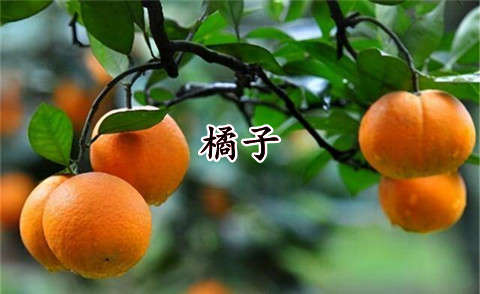链接复制成功!现在分享给好友吧。
The Citrus belongs to a rather complicated and confusing family. For example, Tangerine alone has many species or subspecies. They have different origins and distributions. Consequently, Chinese Tangerine VS Mandarin, it has different sources and different ways of division.
Mandarin (orange) is one of the ancestors of Citrus. Personally, it is the most delicious orange. However, I can remember that I used to think of it as an ordinary orange when I was a child. Its skin is loose, and the fruit can be pushed aside to sigh the magic of nature. It is cool and sweet. Tangerine is a part of Mandarins, and some say that mandarins are divided into separate varieties by crossing with other citrus genera. I will introduce these different oranges respectively.

Chinese Tangerine is a local specialty in Ouhai District, Wenzhou City, Zhejiang Province. It is also the Chinese national geography logo product.
Before Chinese Tangerine vs Mandarin, we should know Tangerine firstly. Chinese Tangerine is a local citrus variety in China. In ancient times, it was listed as a tribute by the imperial court in the Song, Yuan, Ming and Qing Dynasties, and its cultivation history was about 2,400 years. The ancients had the poem “All forests are citrus reticulation, no water is lotus”. In 1990, it was designated as a special fruit for athletes by Beijing “Asian Games”.
The storage life of Chinese Tangerine is better than its other citrus varieties. Even after long storage, the fruit remains “overwintering yellow, fresh in color, and taste”. As early as the fifth year of Chunxi in the Southern Song Dynasty (1178), the “Sea Red” described in the world’s first monograph “Orange Record” written by Wenzhou Satrap Han Yanzhi is the present-day Chinese Tangerine.
Chinese Tangerine has a different shape than its conventional counterpart. The orange fruit is straight in shape. Sometimes, it is pear-shaped or high oblate. Furthermore, the top of the fruit is convex. The peel is orange or golden in color, smooth, and shiny. Its pedicure is bright green. The skin or the peel has a tight combination with the pulp. However, it remains easy to peel, and the pulp is soft, juicy, sweet and delicious, slightly bitter when first eaten. Chinese Tangerine has high nutritional value, contains many vitamins, is also rich in hydrogen peroxide oxidase and anti-aging diastase. And p, k, Ca, Fe, cellulose, and other organic and inorganic substances needed by the human body.
Chinese Mandarin originated in China, but if Chinese Tangerine vs Mandarin, they are indeed so different. However, due to its long history and thousands of years of cultivation, it is impossible to tell the specific location. From Arabs to Eurasia, oranges are still called “Chinese apples.” This term even extends to Holland and Germany. It is one of the important origins of orange fruits in China. There are abundant citrus resources and many excellent varieties, with a cultivation history of more than 4,000 years. According to research, in 1471 AD, Orange, tangerine, Chinese Mandarin, and other citrus fruit trees were introduced into Portugal by China. It was later introduced to the United States in 1665 AD.
Chinese Mandarin has many nutritional benefits. Its Vitamin A can enhance human vision in a dark environment and treat night blindness. Oranges should not be eaten too much. If you eat too much, you will suffer from carotene anemia, and your skin will be dark yellow, just like jaundice. If the palm of your hand turns yellow due to eating too many oranges, just stop eating for a while, and your skin color will gradually return to normal. Zhang Daiji’s uncle, Zhang Yefang, had a special liking for oranges in Ming Dynasty. According to the records he said that, “The nature of oranges is good, the oranges are ripe, and there are no more than oranges in the bedroom. If you don’t give them to the magazine, you will lose your life.” When you eat them, your hands and feet are yellow.
Chinese Mandarin is distributed between 16 ~ 37 north latitudes. This area is high, with an altitude of up to 2,600 meters. Among the place that distributes Citrus are (Batang, Sichuan), starting from Sanya, Hainan Province in the south, Shaanxi, Gansu and Henan in the north, Taiwan Province Province in the east, and Yarlung Zangbo Grand Canyon in Tibet in the west. However, the economic cultivation areas of citrus in China are mainly between 20 ~ 33 north latitudes and below 700~1000 meters above sea level. It is produced in the water systems south of the south slope of Qinling Mountain, the south slope of Funiu Mountain, and the south of Dabie Mountains, southeast to Taiwan Province, south to Hainan Island, southwest to the low altitude areas in southeast Tibet. Cold tolerance zone 9~11.
There are 19 provinces (municipalities and autonomous regions) that produce citrus in China, including Taiwan Province. Citrus is mainly produced in 10 provinces (cities and districts) such as Taizhou, Fujian, Hunan, Sichuan, Guangxi, Hubei, Guangdong, Jiangxi, Chongqing and Taiwan Province, followed by Shanghai, Guizhou, Yunnan, Jiangsu and other provinces (cities), and also cultivated in Shaanxi, Henan, Hainan, Anhui and Gansu.
Above all, can you differentiate one variety from the other now?
Your first 1-on-1 Chinese lesson offer